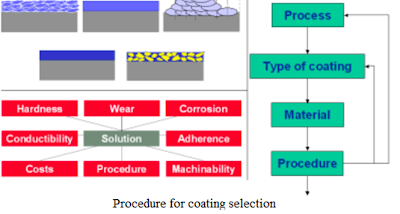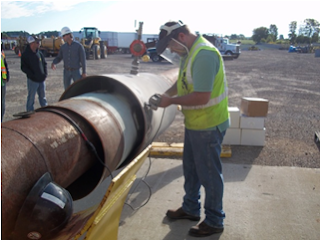Identifying and Choosing the Proper Coating System
For selecting the most appropriate coating system, different criteria should be taken into consideration, such as:
• Maintenance type and strategy (predictive or corrective)
• Wear resistance and thickness of coatings
• Mechanical properties of coatings (pressure, impact, temperature)
• Corrosion resistance of coatings
• Surface position during the coating procedure
• Chemical resistance
• Ease of application
• Repairability of coatings
• Wear resistance and thickness of coatings
• Mechanical properties of coatings (pressure, impact, temperature)
• Corrosion resistance of coatings
• Surface position during the coating procedure
• Chemical resistance
• Ease of application
• Repairability of coatings
Price/efficiency ratio, economic priorities and specific needs are other important criteria for decision making.
B & W Distributors, Inc. consultants have been well trained in assisting you in the proper coating selection for you project. With a combination of the different suppliers and wide range of product we offer, the consultant can work with you to ensure the success of your project.
An example of our products that meets most coating needs with its unique qualities is 3M Scotchkote Encapsulating Coating PolyNox 136.
● PolyNox136 is based on a unique blend of flexible acrylic resins reinforced with inorganic fillers and pigments to produce a system with excellent elastomeric and corrosion resistant properties with optimum levels of UV resistance, adhesion and durability.
● PolyNox 136 is simple and easy to use and can be applied to any surface and ideal for the long term protection of tank exteriors, steel structures, metal roofs, concrete and masonary structures.
• No environmental pollution
• Environmentally green with NO VOC's
• Cold Weather Flexibility
• High build coating systems
● PolyNox 136 has a field proven history of stopping corrosion. It has been successfully and economically used for more than 10 years for maintenance painting of steel structures; including bridges, buildings, cables, towers, and cranes, along with galvanized steel in industrial, commercial and marine environments.
● Cost Savings- Owners of structures can frequently cut project costs in half – and get a much longer coating service life. There can be substantial time and labor cost savings—since the PolyNox 136 system is a one-coat system.
Painters go to any area only once, and there will be no delays normally expected between applications of the layers of a 2 and 3 coat system.
Painters can be more productive because the materials are one-component materials have a very short minimum over coating of only 30 - 90 minutes, eliminating wait time.
Concrete Surfaces: All concrete to be coated should either be lightly abrasive blast cleaned using wet or dry abrasive techniques or alternatively high pressure water jetting.
Metal Surfaces: Surfaces should be prepared by mechanical wire brushing, grinding, or high pressure water jetting (typically 3500psi)
Previously Coated Surface: Any loose/flaking material must be removed. Surfaces should then be thoroughly cleaned and abraded.
Mixing: PolyNox 136 is a single component material and should only require stirring with a slow speed mechanical mixer prior to use to incorporate any slight separation.
Application: PolyNox 136 can be applied by brush, roller, or spray. It should be applied to achieve a minimum dry film thickness of 14 mils either as a single coat by spray or two coats by brush. For brush application, the first coat should be allowed to dry to the touch (approximately 1 hour depending on weather conditions) prior to the second coat being applied.
All equipment should be cleaned immediately after use with clean water; any stubborn deposits can be removed with 3M Universal Cleaner.
For more information on how PolyNox 136 can solve your coating needs please contact your local B&W Sales representative or contact B&W Distributors, Inc. directly at 480-924-8883
PolyNox 136, a 3M Corrosion Protection System, is a high performance acrylic coating designed for use as a corrosion resistant and encapsulation system for metallic and cementitious surfaces.
What makes PolyNox 136 System is different
● PolyNox 136 is simple and easy to use and can be applied to any surface and ideal for the long term protection of tank exteriors, steel structures, metal roofs, concrete and masonary structures.
• PolyNox 136 has excellent adhesion to all metals and concrete.
• Resistant to a wide range of chemicals• No environmental pollution
• Environmentally green with NO VOC's
• Cold Weather Flexibility
• High build coating systems
● PolyNox 136 has a field proven history of stopping corrosion. It has been successfully and economically used for more than 10 years for maintenance painting of steel structures; including bridges, buildings, cables, towers, and cranes, along with galvanized steel in industrial, commercial and marine environments.
● Cost Savings- Owners of structures can frequently cut project costs in half – and get a much longer coating service life. There can be substantial time and labor cost savings—since the PolyNox 136 system is a one-coat system.
Painters go to any area only once, and there will be no delays normally expected between applications of the layers of a 2 and 3 coat system.
Painters can be more productive because the materials are one-component materials have a very short minimum over coating of only 30 - 90 minutes, eliminating wait time.
Michigan
DOT in Port Huron has been using 3M’s PolyNox 136 since April of 2006 after a
previous coating system failed.
- They like the
ease of use.
- It is applied by
brush, roll, or spray on manually prepared surfaces.
- It extends their
painting season because it can be applied in cold temperatures or high
humidity levels.
- It does not chip or flake off in cold weather with 160% elongation at 0F.
Concrete Surfaces: All concrete to be coated should either be lightly abrasive blast cleaned using wet or dry abrasive techniques or alternatively high pressure water jetting.
Metal Surfaces: Surfaces should be prepared by mechanical wire brushing, grinding, or high pressure water jetting (typically 3500psi)
Previously Coated Surface: Any loose/flaking material must be removed. Surfaces should then be thoroughly cleaned and abraded.
Mixing: PolyNox 136 is a single component material and should only require stirring with a slow speed mechanical mixer prior to use to incorporate any slight separation.
Application: PolyNox 136 can be applied by brush, roller, or spray. It should be applied to achieve a minimum dry film thickness of 14 mils either as a single coat by spray or two coats by brush. For brush application, the first coat should be allowed to dry to the touch (approximately 1 hour depending on weather conditions) prior to the second coat being applied.
All equipment should be cleaned immediately after use with clean water; any stubborn deposits can be removed with 3M Universal Cleaner.
For more information on how PolyNox 136 can solve your coating needs please contact your local B&W Sales representative or contact B&W Distributors, Inc. directly at 480-924-8883














